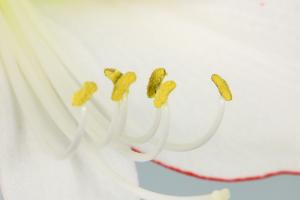What Would Happen to a Plant Cell in Distilled Water
Water is essential for the survival of plants. Like any other living organism, plants rely on water to carry out their vital functions. Water regulates plant temperature, helps in the growth of foliage and roots, and maintains turgor pressure in plant cells that enables the plant to stand firm. A plant cell, like any living cell, is composed of various components that perform unique functions. This article explores the effects of distilled water on a plant cell and the implications of water balance in plants.
The Composition of a Plant Cell
A plant cell is made up of different components such as the cell wall, cell membrane, chloroplasts, cytoplasm, mitochondria, and vacuoles. The cell wall is a rigid structure that provides support to the plant, while the cell membrane controls the movement of materials in and out of the cell. Chloroplasts are responsible for photosynthesis, which is the process that enables plants to manufacture their own food using sunlight, carbon dioxide, and water. Cytoplasm is the gel-like substance that surrounds the nucleus, and the mitochondria are responsible for cellular respiration, which is the process that releases energy from food. Vacuoles are large storage compartments that contain water, enzymes, waste products, and toxic substances.
What is Distilled Water?
Distilled water is a type of water that has undergone a distillation process to remove impurities. Distillation involves heating water to its boiling point, collecting the steam, and condensing it back to water. The distillation process removes minerals, contaminants, and bacteria, leaving pure water. Distilled water has a neutral pH, which means it is neither acidic nor alkaline. Compared to tap water, distilled water is relatively pure and does not contain any additives such as chlorine or fluoride.
The Effects of Distilled Water on a Plant Cell
When a plant cell is placed in distilled water, it undergoes a process known as osmosis. Osmosis is the movement of water molecules from a high concentration to a low concentration through a semi-permeable membrane. The semi-permeable membrane determines which molecules can pass through it and which cannot. In plants, the cell membrane is the semi-permeable membrane that regulates the movement of water, nutrients, and other materials in and out of the cell.
When a plant cell is placed in distilled water, the concentration of water molecules outside the cell becomes higher than inside the cell. Therefore, water molecules move from the outside to the inside of the cell. This movement of water molecules causes the plant cell to become swollen and turgid. Turgor pressure is the pressure exerted by the cell contents against the cell wall. In plant cells, turgor pressure is vital for maintaining the structural integrity of the plant. When there is enough turgor pressure, the plant can stand upright, and the leaves can receive sunlight efficiently. However, if there is insufficient turgor pressure, the plant will wilt, and its growth will slow down.
When the concentration of water molecules inside and outside the cell becomes equal, osmosis stops. At this point, the plant cell remains turgid, and the plant remains healthy. However, if the concentration of water molecules inside the cell becomes higher than outside the cell, water molecules will move from the inside to the outside of the cell. As a result, the plant cell will lose water, and the cell membrane will detach from the cell wall. This process is known as plasmolysis. When plasmolysis occurs, the plant wilts, and its growth slows down.
The Implications of Water Balance in Plants
Water plays a crucial role in the life cycle of plants. Most plants require adequate water to grow, and water deficit can cause growth retardation and death. Water deficit can also affect photosynthesis, resulting in a reduction in plant biomass. On the other hand, excess water can cause the plant to become waterlogged, which restricts the movement of oxygen to the roots, leading to poor root growth and eventual plant death. Therefore, water balance is critical for the survival and growth of plants.
Plants have developed mechanisms to cope with water deficit, such as altering their stomata to reduce water loss and releasing protective hormones such as abscisic acid. These mechanisms allow the plant to conserve water and survive in drought-prone regions.
Conclusion
In conclusion, placing a plant cell in distilled water causes the cell to undergo osmosis, becoming swollen and turgid. When the concentration of water molecules inside and outside the cell becomes equal, osmosis stops, and the plant remains healthy. However, if the concentration of water molecules inside the cell becomes higher than outside the cell, the plant loses water, leading to plasmolysis and eventual plant death. Therefore, maintaining water balance in plants is critical for their survival and growth.

 how many times do yo...
how many times do yo... how many planted tre...
how many planted tre... how many pine trees ...
how many pine trees ... how many pecan trees...
how many pecan trees... how many plants comp...
how many plants comp... how many plants can ...
how many plants can ... how many plants and ...
how many plants and ... how many pepper plan...
how many pepper plan...






























